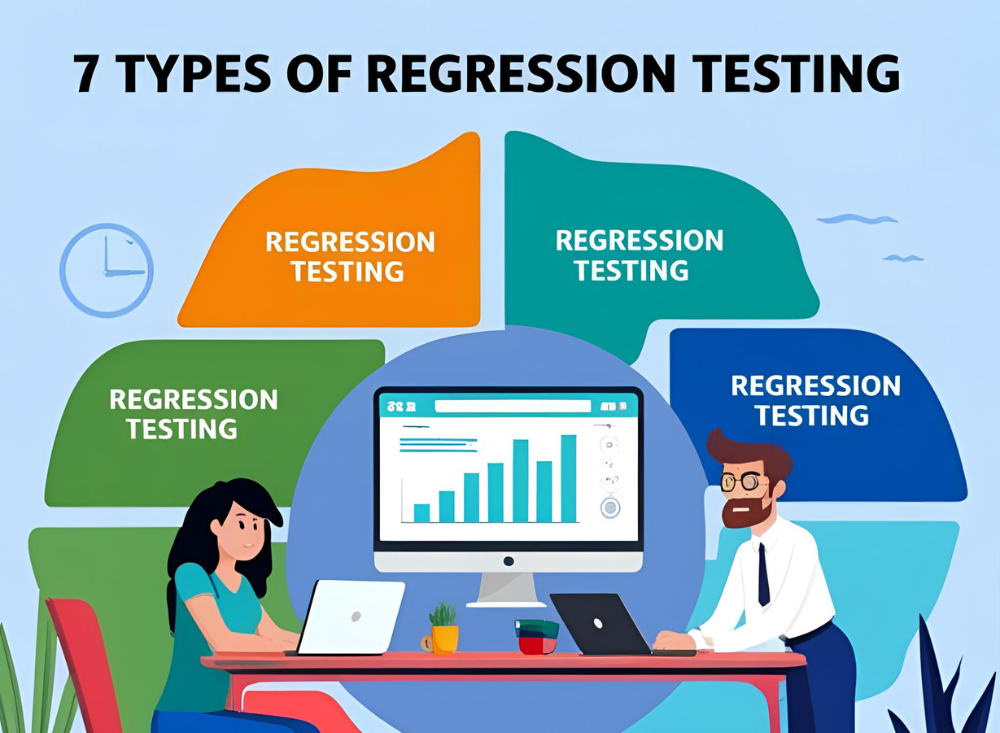
In today’s fast-paced development cycles, regression testing isn’t just helpful—it’s essential. Every code change, no matter how small, risks introducing bugs into existing functionality. That’s where regression testing comes in. But not all regression tests are created equal. Depending on your project size, goals, and resource availability, different types of regression testing may be more effective than others.
This guide walks you through the seven main types of regression testing, when to use each one, and how to optimize your testing process—especially with the help of AI.
When to Carry Out Regression Tests
You should run regression tests whenever:
- A new feature is added
- Code is modified or refactored
- Bugs are fixed
- Performance improvements are made
- Integration with other systems changes
The key question is: What kind of regression testing fits your context best? Let’s dive in.
What are the Different Types of Regression Testing, and When Should You Use Them?
1. Corrective Regression Testing
What it is:
This type tests the existing test cases without making any changes to them when the codebase remains relatively unchanged.
When to use it:
Use this when no new functionality is added, and you just want to ensure existing features are stable after a fix or minor tweak.
2. Unit Regression Testing
What it is:
Focuses on testing individual units or components in isolation from the rest of the application.
When to use it:
Ideal during early stages of development or after changes to a specific function or module. Best for small, localized updates.
3. Complete Regression Testing
What it is:
A thorough test of the entire system to verify all existing functionalities after major code updates.
When to use it:
Use it before a major release or after large-scale changes like platform upgrades, major feature additions, or architecture overhauls.
4. Partial Regression Testing
What it is:
Tests the modified code along with its immediate dependencies to ensure that new changes don’t affect the surrounding code.
When to use it:
Best for updates that touch a specific feature or module but could potentially affect nearby components.
5. Selective Regression Testing
What it is:
Involves running only a subset of test cases that are relevant to the changes made in the code.
When to use it:
Use this when you have limited time or resources. It helps focus efforts while still maintaining a reasonable level of coverage.
6. Progressive Regression Testing
What it is:
Tests new functionalities using updated test cases, ensuring that the enhancements don’t break existing features.
When to use it:
Best for continuous development environments (like CI/CD pipelines), where new features are regularly added.
7. Visual Regression Testing
What it is:
Checks the user interface for unintended visual changes by comparing screenshots before and after a code change.
When to use it:
Ideal for front-end/UI updates to ensure layout, styles, and element placements remain consistent across versions.
Automated vs Manual Regression Testing: Which Should You Use?
| Aspect | Automated Testing | Manual Testing |
|---|---|---|
| Speed | Fast, especially for repetitive tasks | Slower, but good for exploratory tests |
| Accuracy | High (minimal human error) | Can be error-prone |
| Cost-efficiency | Higher ROI over time | Expensive with large test suites |
| Maintenance | Requires updates as code evolves | Low initial setup |
| Best For | Stable and repeatable scenarios | One-off or UI-sensitive testing |
Pro tip: Use a hybrid approach—automate where possible, and reserve manual testing for UX-intensive scenarios.
3 Ways AI Optimizes the Regression Testing Process
1. AI makes things quicker. Seriously quicker.
AI-driven tools can identify affected test cases instantly, run tests in parallel, and highlight probable breakpoints—slashing hours from your test cycle.
2. AI minimizes the amount of test maintenance you need to do
Smart tools can update your test scripts automatically when UI elements change, reducing the need for constant manual upkeep.
3. AI predicts problem areas so engineers can anticipate issues
By analyzing past bugs, code changes, and usage patterns, AI can predict where failures are likely to occur, allowing for preemptive testing.
Genqe.ai: Your New AI Regression Testing Tool?
Looking to streamline your regression testing? Genqe.ai offers a next-gen testing solution powered by machine learning. It’s designed to:
- Analyze code changes and automatically select test cases
- Perform intelligent visual regression comparisons
- Reduce maintenance overhead with self-healing tests
Whether you’re scaling a startup app or maintaining a complex enterprise system, Genqe.ai helps bring speed, accuracy, and insight to your testing workflow.
In Summary:
There’s no one-size-fits-all approach to regression testing. The key is choosing the right type at the right time, and using tools—especially AI-powered ones—to make your process smarter and faster.
Need help building a regression strategy? Let’s map it out together.